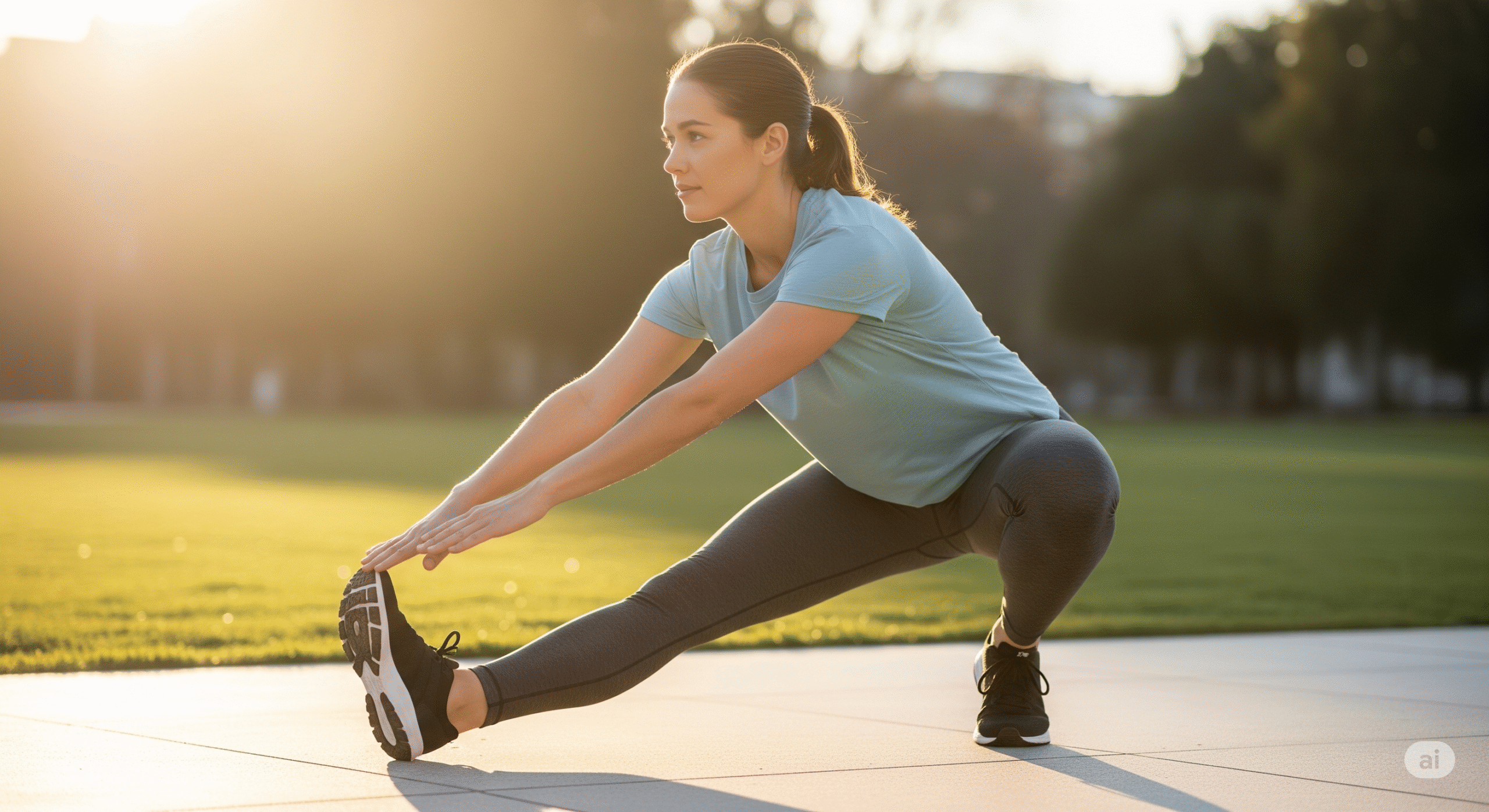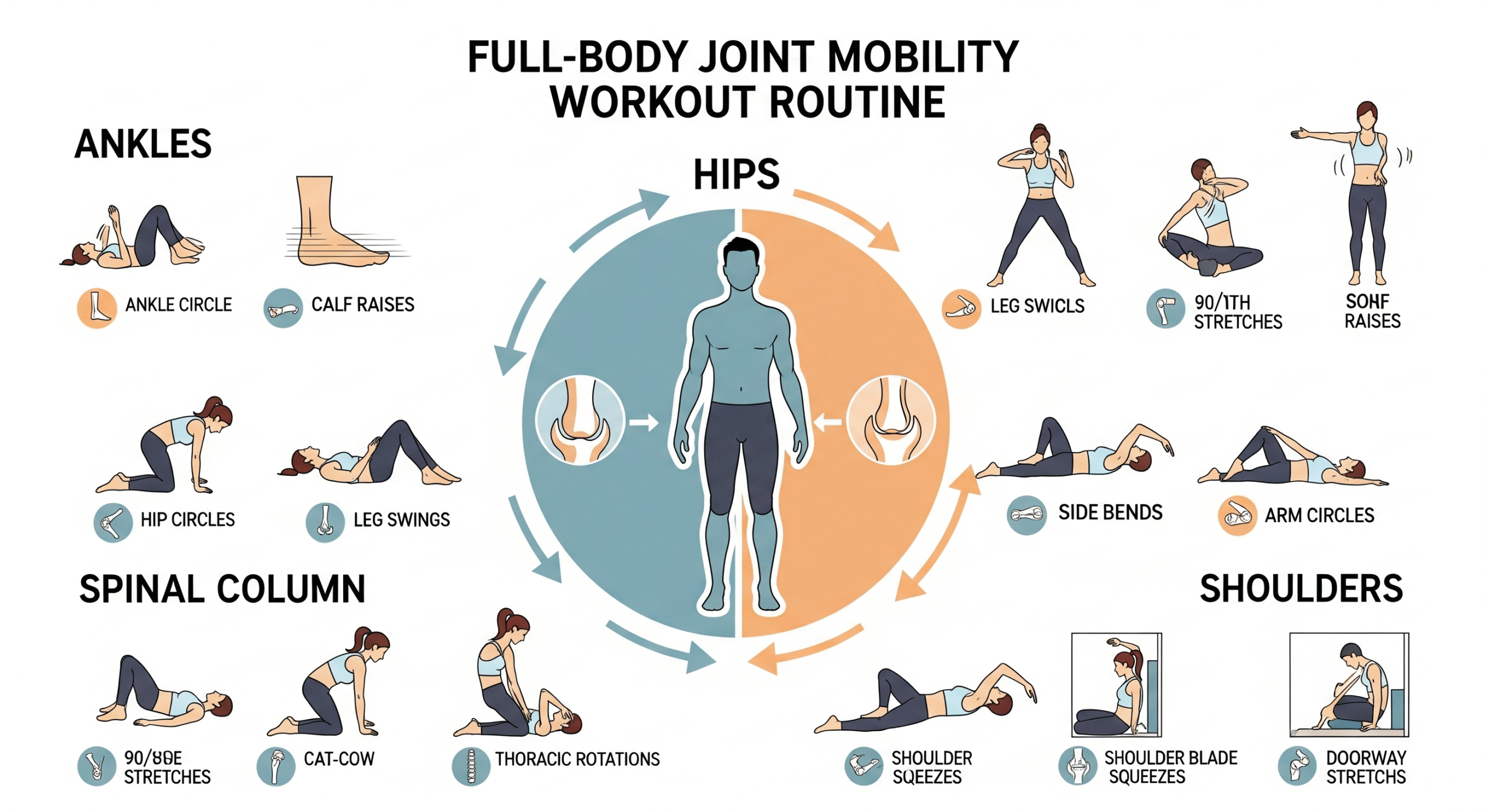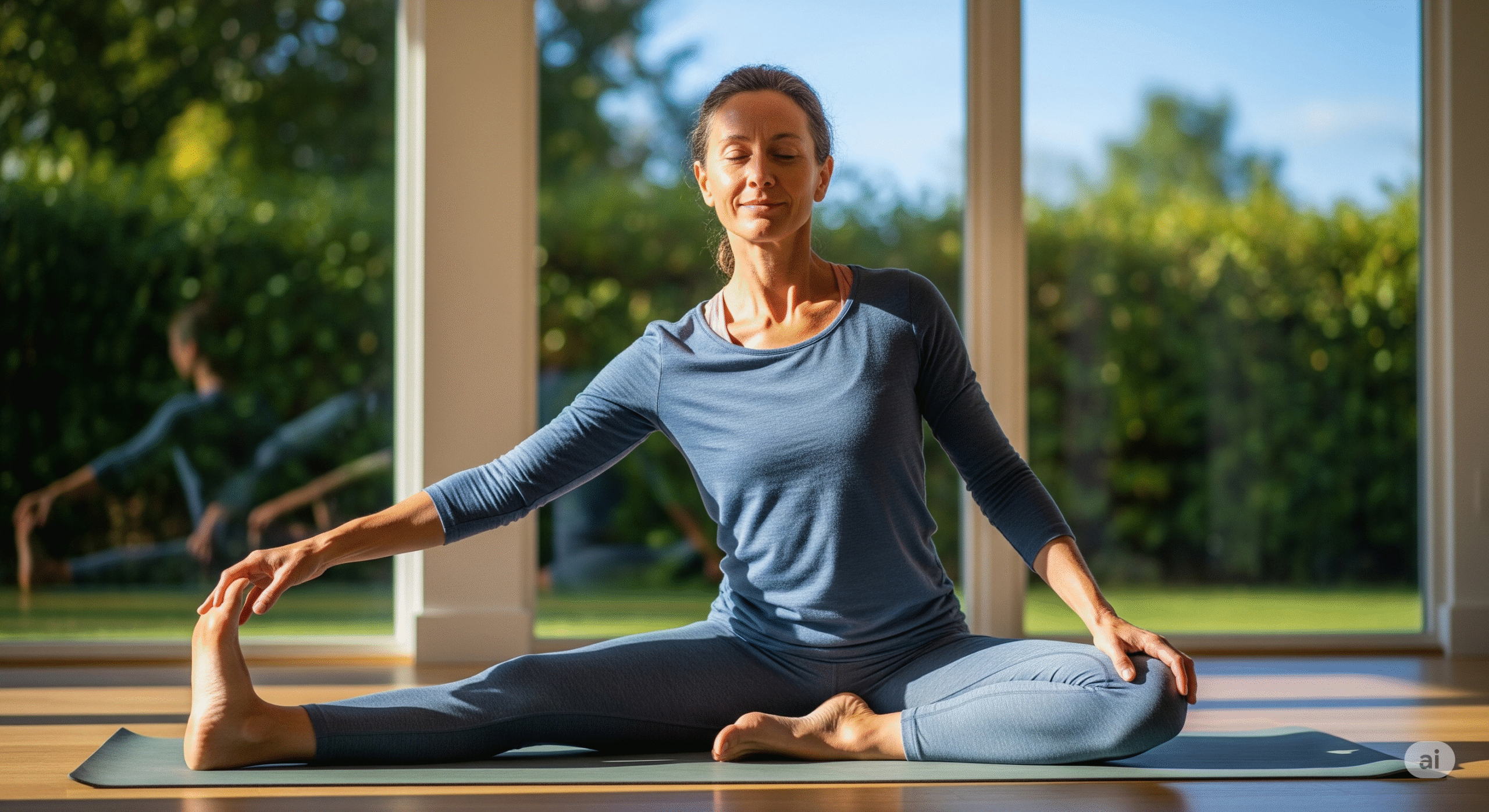Unlock Your Body's Full Potential: A Comprehensive Guide to Improving Mobility, Flexibility, and Joint Health

In our modern, often sedentary lives, we lose one of our most precious assets: the ability to move freely and without pain. While flexibility—the length of a muscle—is important, true freedom comes from **mobility**, the ability of your joints to move through their full, functional range of motion. Poor mobility is a silent contributor to chronic pain, stiffness, and a higher risk of injury. This comprehensive guide will show you how to systematically improve your body’s mobility, giving you the power to reclaim an active, pain-free life through targeted exercises, a supportive diet, and smart supplementation.
The Vital Difference: Mobility vs. Flexibility
Many people use "mobility" and "flexibility" interchangeably, but they are not the same. **Flexibility** is a passive measure—it's how far a muscle can stretch. You might be able to touch your toes, but that doesn't mean your spine and hips can move freely in all directions. **Mobility**, on the other hand, is an active measure. It’s the combination of flexibility, strength, and coordination that allows your joints to move safely and efficiently. For example, a dancer has both flexibility and mobility, while someone who can touch their toes but feels pain when they squat has good flexibility but poor mobility. Focusing on mobility is key to functional, everyday movement and long-term joint health.
Why Mobility is Your Secret Weapon Against Pain
When your joints lack full range of motion, your body finds other ways to compensate. This leads to imbalanced muscles, poor posture, and increased stress on other joints and connective tissues, ultimately causing pain. Improving mobility can:
- **Reduce Chronic Pain:** By allowing your joints to move properly, you take stress off overworked muscles and ligaments.
- **Improve Posture:** A mobile spine and shoulders are essential for maintaining proper posture, which can alleviate back and neck pain.
- **Prevent Injuries:** Mobile joints are more resilient and less prone to injury, as they can handle unexpected movements more effectively.
- **Enhance Athletic Performance:** Whether you're a seasoned athlete or a casual walker, better mobility translates to more efficient and powerful movement.
- **Boost Quality of Life:** Simple daily tasks like bending over, tying your shoes, or reaching for an object become effortless.
Practical Mobility Routines and Exercises
The best way to improve mobility is through consistent, daily practice. Here are some simple exercises to target key areas of your body.
Spinal Column and Hips
- **Cat-Cow Pose:** Start on your hands and knees. Inhale as you arch your back and look up (Cow). Exhale as you round your spine, tucking your chin to your chest (Cat). This simple exercise lubricates your spinal joints and improves flexibility.
- **Spinal Twists:** While seated in a chair, gently twist your torso from side to side, holding for a few seconds. This improves rotation in the spine.
- **Hip Circles:** Stand and hold onto a chair for support. Gently swing one leg forward and backward, then in circles. Repeat on the other side. This lubricates the hip joint and improves range of motion.
- **Figure-Four Stretch:** Lie on your back with your knees bent. Cross one ankle over the opposite knee. Gently pull the bottom leg toward your chest until you feel a stretch in your glute and hip.
Shoulders and Ankles
- **Shoulder Rolls:** Stand or sit tall and roll your shoulders up, back, and down in a circular motion. This releases tension and improves mobility in the shoulder joint.
- **Arm Circles:** Extend your arms out to the sides and make small circles, gradually increasing the size. Reverse the direction.
- **Ankle Circles:** While seated or standing, lift one foot and slowly rotate your ankle clockwise and then counterclockwise. This is excellent for relieving stiffness in the ankles and feet.
- **Calf Raises:** Stand and slowly lift your heels off the ground, standing on your tiptoes. Lower back down with control. This strengthens the calf muscles and improves ankle stability.

The Role of an Active Lifestyle and Mindful Movement
Beyond structured routines, integrating more movement into your daily life is a powerful tool for mobility. Avoid long periods of sitting by getting up and walking around every 30-60 minutes. Use a standing desk, take the stairs instead of the elevator, or walk to run errands. These small choices add up and prevent joints from stiffening up.
Furthermore, consider incorporating mind-body practices like **yoga** or **Tai Chi** into your weekly routine. These disciplines focus on flowing movements, balance, and deep breathing, which are all essential for enhancing overall mobility and reducing the mental and physical stress that contributes to stiffness and pain. The intentional, controlled movements of yoga, for example, can teach you to connect with your body and understand its limitations and capabilities in a safe and supportive environment.

How Nutrition and Targeted Nutraceuticals Supercharge Your Mobility
Just as a car needs the right fuel and oil to run smoothly, your body requires specific nutrients to keep your joints healthy and mobile. A diet rich in anti-inflammatory foods is a great start, but certain key compounds can provide direct support for your joint tissues.
- **Collagen:** This is the most abundant protein in your body and a major component of cartilage, tendons, and ligaments. Consuming collagen-rich foods like bone broth or using a collagen supplement can provide the building blocks your body needs for tissue repair.
- **Omega-3 Fatty Acids:** As mentioned in our previous guide, these healthy fats are crucial for managing inflammation, which can directly improve joint lubrication and reduce stiffness.
- **Vitamins and Minerals:** Vitamin C is essential for collagen synthesis, while Vitamin D and Calcium are vital for bone health. Ensuring adequate intake of these can prevent structural issues that lead to poor mobility.
Sourcing enough of these nutrients from food alone can be a time-consuming and challenging task. This is where **nutraceuticals** offer an intelligent solution. Modern supplements are formulated to provide concentrated, standardized dosages of these key ingredients in one convenient form. For instance, a high-quality joint health supplement may combine collagen peptides, glucosamine, and chondroitin, along with anti-inflammatory herbs like turmeric. This saves you the time and effort of sourcing multiple foods and ingredients, ensuring you get the optimal dose for maximum efficiency and value. Nutraceuticals can act as a powerful complement to a healthy diet and consistent exercise routine, giving your body the edge it needs to restore and maintain peak mobility.

Frequently Asked Questions (FAQ)
Q1: What is the difference between mobility and flexibility?
A1: Flexibility refers to the length of your muscles, or their ability to stretch. Mobility, on the other hand, is the ability of a joint to move through its full range of motion without pain or restriction. Both are important, but mobility is crucial for functional, pain-free movement.
Q2: How often should I do mobility exercises?
A2: For optimal results, consistency is key. Aim for 10-15 minutes of gentle mobility exercises daily. This consistent effort is more effective than infrequent, intense sessions. You can break it up into short routines in the morning, during a work break, and in the evening.
Q3: Can a bad diet affect my mobility?
A3: Yes. A diet high in inflammatory foods can contribute to systemic inflammation, leading to joint stiffness and pain. Conversely, an anti-inflammatory diet rich in omega-3s, antioxidants, and key nutrients can support joint lubrication and tissue repair, directly improving mobility.
Q4: Are supplements necessary to improve mobility?
A4: While a balanced diet is fundamental, nutraceuticals can provide concentrated, standardized dosages of key nutrients like collagen, glucosamine, and chondroitin. These are often difficult to get in sufficient amounts from diet alone, making supplements a convenient and highly efficient way to support long-term joint and connective tissue health.
Conclusion: Your Path to a More Mobile, Active Life
Improving mobility is one of the most proactive steps you can take to safeguard your health and prevent pain as you age. By incorporating consistent movement, a supportive diet, and targeted supplementation into your life, you are not just addressing symptoms—you are building a body that is resilient, balanced, and capable of living life to the fullest. This journey requires patience and commitment, but the reward of a more mobile, pain-free future is immeasurable.
Take the Next Step Towards Optimal Joint Health
Ready to give your joints the advanced support they deserve? Our curated selection of top-tier nutraceuticals is designed to provide targeted support for joint health, reduce inflammation, and improve mobility, combining the best of nature and science.
Discover the Top 3 Supplements for Joint Pain and MobilityUnlock a more mobile, pain-free future today.
